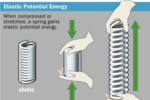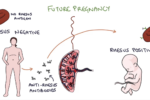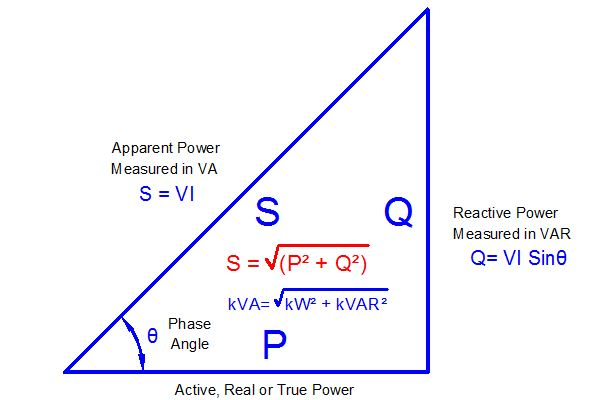What do you know about power? A fact analysis.
We all are aware of the fact that we need energy and power to perform. In a powerlifting competition, the amount of weight lifted by the competitor shows the power and strength of the individual. Then what is the definition of power?
What is Power?
Britannica. com says “Power, in science and engineering, time rate of doing work or delivering energy, expressible as the amount of work done w, or energy transferred, decided by the time interval, t or w/t.” In simple, we may say -the rate of doing work in unit time is power. Further, we may say the amount of energy converted or transferred per unit of time is called power.
- The SI unit of power is the watt(w), which is Joules per second (J/S).
- SI base units-kg.m2.s-3
- Dimensional formula-M1L2T-3
- Power is expressed as=P= w/t, where P is power, w is work, and time is t.
- or the amount of change in energy divided by the change in time, P= ΔE/ Δt
Sometimes the power of motor vehicles and machines is expressed in the term horsepower (hp). One horsepower is approximately 745.7 watts. Both the words horsepower and watt are associated with Scottish inventor, James Watt, as he coined the term “horsepower” to characterize the benefit of the steam engine and “watt” is used in his honour.
In a constant force, F is applied throughout a distance of x, and the work done is defined as W= F.x. In this instance case power can be expressed as;
- P=dW/dt= d/dt (F.x)=F.dx/dt=F.dx/dt=F.V
In variable force over a three-dimensional curve C, then the work is expressed in terms of the line integral,
- W=ʃc F.dr=ʃΔt F.dr/dt dt=ʃΔt F
From the fundamental theorem of calculus (integration), It is clear that
- .P=dw/dt=d/dt(F.S)=F.ds/dt=F.v.
Hence the above formula is valid for any situation.
Average power:
Average power is measured for a long span of time. Average power is the total energy consumed divided by the total time taken for the purpose. In simple language, we may say that the average power is the average amount of work done or energy converted per unit of time. Average power is expressed as follows;
- Pavg =Δw/Δt, Where Δw is the amount of work done, Δt during the period of time. Pavg , is average power.
Mechanical power:
Mechanical power means the energy or motion transmitted from an engine motor or other prime movers from steam, water, wind, electricity, fossil fuels, or any other sources. In simple mechanical power is the energy transmitted by a machine other than manual power to run it. It is limited to the second law of thermodynamics. examples;
- Bus, cars, aircraft, boats, ships,s and any machine-run objects consume power.
Mechanical power is assessed by the force and speed or by the torque and rotational speed of the object. Physically, the mechanical power P, of a moving body is defined by the work or energy w, transferred within a specific change of time-Δt. P= w/Δt. More work done within a specific period means more power is consumed.
Electrical Power:
The rate at which electrical energy is converted by an electric circuit is known as electric power. It is a product of voltage and current, expressed as; P=VₓI=VI, where P is power in watts, V is voltage and I is electric current. The electrical energy is stored in charge Q, under the influence of voltage V, (potential). Hence the formula of electrical power is ;
- P=Electrical Energy/Time=VₓQ /t, where Q/t is I. I is electrical current (Flow of charge per unit), Hence P=VI
It is calculated that in an electrical circuit, the power consumed or generated by a component is equal to the product of the voltage drop across it and the current flowing through it.
Calculation of electrical power;
The electrical power generated or consumed by a component in a circuit can be easily calculated using the following equation.

According to Ohms law, V=IR
P=I2R or P=V2/R
Where I= The current flowing through the component, V= Voltage of the component, and R= Resistance of the component.
Producer:
A producer is an electrical unit, that generates or supplies electrical power to the circuit by converting other forms of energy into electrical energy. examples
- Batteries convert chemical energy to electrical energy.
- Water turbines convert water’s kinetic energy into electrical energy.
- Solar power plants convert solar radiation/ sun rays into electrical energy.

All the above producers produce electrical energy and supply power in different conditions.
Consumer:
An electrical unit consumes electrical power and converts the electrical energy into other forms of energy as required quantity. Examples;
- The bulb converts electrical energy into light energy and heat/thermal energy.
- Fan, convert electrical energy (significant portion) into kinetic energy and heat energy (small portion).
- The heater converts electrical energy into heat energy.
- An electrical motor converts the electrical energy into rotational kinetic energy.
Current flows are of two types, such as Direct Current (DC) and Alternative Current (AC). Hence two types of electrical power are named after the current flows such as Direct Current (DC) power and Alternative Current (AC) power.
DC power:
DC power is supplied by DC sources like batteries and photovoltaic/solar cells. DC has one direction and the current flow is constant. The formula of current is calculated as; P=VI, where P is DC power, V is the voltage across the component and I is the passing current.
Alternative Current Power:
AC power supply is used to supply alternative current power to load, which periodically reverses direction ( two directions) and changes continuously in between the minimum and maximum peak values. Ac power is mostly used for power distribution to consumers.
AC power is further classified into three types, such as Apparent power (AP), Active or Real Power, and Reactive power.
AP power;
AP is the total power flowing by the source to the circuit. It is the combination of Active Power and Reactive power and is measured in Volt-Ampere. It is also the product of RMS voltage and RMS current. The Equation is
S=Vrms Irms,
Where Vrms is RMS( Root Mean Square ) voltage= Vpeak/√2 and Irms, is RMS (Root Means Square) current=Ipeak/√2.
Active power:
The real power or true power dissipated in the circuit is known as active power, which is actually utilized or consumed. It is also called useful or watt full power. The formula of Active power;
- P=V ₓ I…(DC circuit)
- P=V ₓ I ₓCosᴓ( single phase AC circuit)
- P=√3ₓ VLₓ IL ₓ Cosᴓ (Three phase AC circuit )
- kW=√kVA2–kVAR2
where P is an active power, V is voltage in the circuit, I is current, VL is load voltage without filter, IL is loaded current without filter, kW is kilowatt-hour, kVA is kilovolt amps or 1,000-volt-amps, kVAR is kiloVolt Amps Reactive, Cosᴓ is adjacent/hypotenuse.
Reactive power:
A power that continuously bounces back and forth, between source and load is known as Reactive power. It is also known as useless or wattles power. Reactive power helps to produce magnetic and electric fields, is stored in the circuits, and is discharged by transformers, induction motors, etc. Formula;
- Q=Vₓ I ₓ Sinᴓ
- VAR=√(CAv2– P2)
- kVAR=√(kVA2-kW2)
- Reactive power=√Apparent power2– True power2.
Active, Reactive, and Apparent power constitutes a right-angle triangle, representing three sides called the power triangle. Where the base component is an active power, the perpendicular is reactive power and the hypotenuse represents apparent power.

Radiant Power;
The term “Radiant power “refers to average sustainable electromagnetic (EM) energy received from a source, either natural or manmade- artificial. Radiant power is primarily the power of Sun rays. Sun is the primary source of electromagnetic radiation which distributes a wide range of packets of energy called photons. Photons travel in waves of various wavelengths.
The bigger the wavelength the smaller the frequencies and vice versa. The longer the duration of exposure to radiation or radiant energy, the greater the radiation power produced. Sun’s photons are transmitted to earth and hit the target. The radiant power has three parts as;
- The source of the radiation-Sun
- The transmission of radiation
- The target-plants

The radiant power empowers the plants to process photosynthesis and during the process Carbon Dioxide (Co2) is converted into glucose and releases Oxygen into the air and stores chemical energy for the future.
Radiant power formula:
The radiant power is emitted in a given direction by a given source along the center of an infinitesimal cone, whereas the radiant (energy ) flux or radiant power is P, Per unit solid angle is w. The formula is given the direction of the radiant power divided by the solid angle of the cone. (dp/dw), and the simplified expression is I=P/S when the radiant power is constant over the surface area considered). SI unit is Wsr-1.
Peak Power:
Peak power is the maximum power that, the power supply can be sustained for a few seconds. It is also referred to as peak surge power. The peak is always higher than the continuous power and is required for a limited amount of time.
The aim of the peak power supply is to provide sufficient (high wattage) power to handle the load spikes and to prevent damaging the supply. For example, a 1000watts supply can have a peak power of 1500watts for 5 seconds. However, a 100% load capacity power supply is not possible, due to transmission losses and other factors like theft. Peak power calculation- Divide the energy per pulse by the pulse width (in time).
Bottom line:
Energy and power are associated with each other and inseparable. The different names and applications of power are for the betterment of human society along with the plants and animal kingdom. In everyday life, we are encountering the effects of power every moment, which is the blessing of modern science.





6 Comments
Very informative article 👍🙏🏽
Thank you for encouragement 👍
Thanks for valuable evaluation
Great👏👏👏. Very very informative and well explained..
Thank you Dillip babu for valuable words.
Nice article